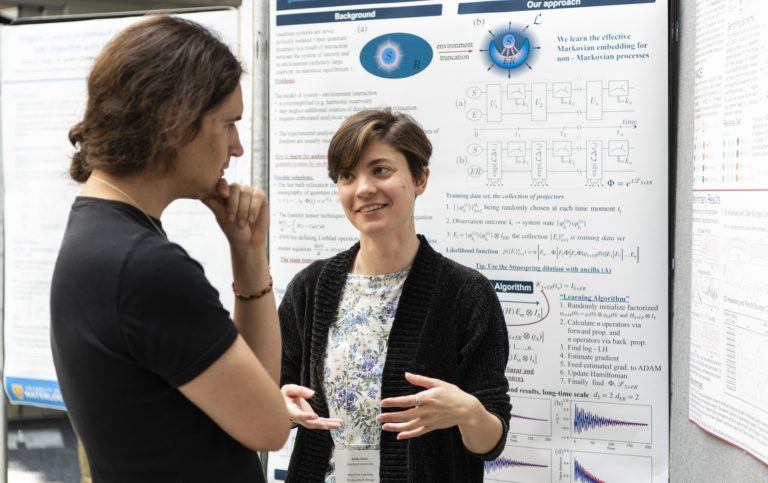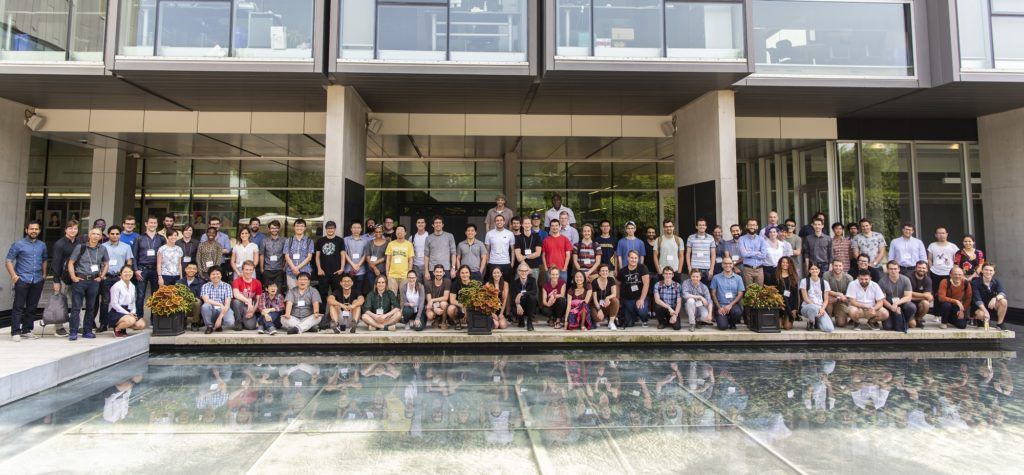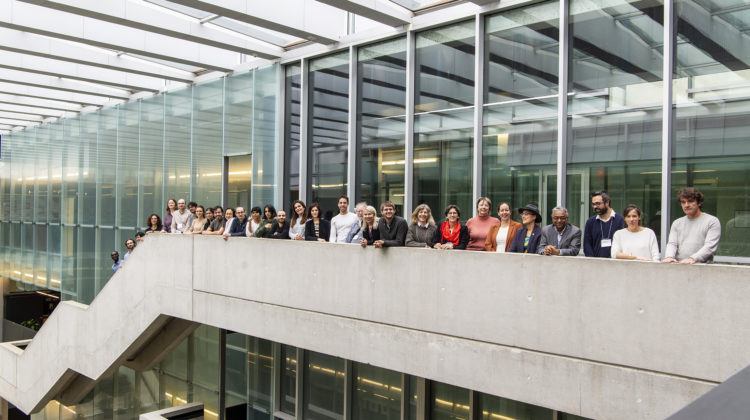Quantum scientists embrace machine learning to push research and application
Long seen as the domain of computer scientists, machine learning is now considered a powerful tool for tackling difficult problems in quantum physics.

The last few years have seen an explosion of interest in quantum machine learning to accelerate scientific discovery in a range of fields, from quantum computing to the development of new materials and medicines.
That effort deepened in July as researchers from industry and academia gathered for the week-long workshop “Machine Learning for Quantum Design” at Perimeter Institute.
Conference co-organizer Roger Melko said the conference demonstrated the remarkable progress researchers have made in just a few years since the previous gathering of its kind at Perimeter.
“We first had this conference on quantum machine learning three years ago, and it was largely blue-sky proposals and ideas back then,” he said. “Now, the scientists here are actually implementing those ideas. The field is changing fast and the pace of that change is accelerating.”
Melko holds the Canada Research Chair in Computational Many-Body Physics at the University of Waterloo and is Associate Faculty at Perimeter Institute, where he heads the Perimeter Institute Quantum Intelligence Lab.
Because the field is advancing so quickly, Melko said, the only way for researchers to remain at the forefront is to gather in person at conferences. “The papers are coming out so fast, it’s nearly impossible to read them all. Everyone’s inboxes are so full that face-to-face is the only way to truly connect, to establish a community in the field. It’s the best way to truly learn.”
The irony in that notion – humans gathering to “truly learn” ways to make machines learn – is not lost on Melko, but he says one of the exciting motivations behind this research is the possibility that some problems simply cannot be tackled by human minds alone. “Maybe there are problems so difficult that we humans are fundamentally limited in our ability to solve them.”

The problem isn’t a limit on human intelligence, but rather that some scientific puzzles seem to have almost unlimited complexity.
Estelle Inack, the Francis Kofi Allotey Postdoctoral Fellow at Perimeter, co-organized the conference with Melko. She says the impetus behind much of the research is the quandary of enormous amounts of data.
“We are looking at applying artificial intelligence to quantum physics, because some quantum physics problems have exponentially large data sets,” Inack said. “In quantum physics, we have a wavefunction that is exponentially large, and machine-learning techniques have been shown to apply to this kind of problem.”
This flow between physics and computer science is being driven by two things, said Lei Wang, a pioneer of many-body physics and professor at the Chinese Academy of Sciences – Institute of Theoretical Physics.
The first is a mathematical tool called “tensor networks.” Tensor networks are used by quantum information scientists to understand quantum entanglement.
But it turns out, Wang said, that tensor networks have a close connection to neural networks. “There were some explicit mathematical connections,” he said. “Nowadays, I think through this link, lots of beautiful work and useful work has been done.”
The other driving force is quantum computing and the bid to perform machine learning on a quantum circuit, instead of using neural networks. Here, tensor networks again play a major role. “Through this connect, this bridge, now the whole thing is like a single field. That’s why all the many-body physicists are excited,” Wang said.
While the field is still at an early stage, he expects that some long-standing challenges will be solved in the next few years.
Conference speaker and Cornell University professor Paul Ginsparg has had a singular view of the rise of machine learning. He has tracked the rise of deep learning and machine learning in papers published on the arXiv (pronounced archive), the free pre-print server that he created.
It started to appear in computer science papers around 2010, and by 2015 was included in around 100 computer science papers each month. By 2019, the site was receiving 850 computer science papers per month that involved deep learning and machine learning.
For physics papers, the numbers were lower but the increase between 2010 and 2019 is comparable. By the end of 2018, more than 100 physics papers each month involved deep and/or machine learning.

That’s a phenomenal rate of uptake, Ginsparg told conference participants. And it might indicate rocks lurking in the waters ahead.
Technologies change frequently, and for machine learning, a new approach has been developed every few years. Teams can be cast adrift if they don’t keep an eye on what new wave might be coming.
However, during a break between sessions, Ginsparg said he also sees a deeper danger if we look to the computers seeking answers rather than understanding.
He rattles off Maxwell’s equations as an example. “We’ve understood a physical phenomenon when we can construct this incredibly encapsulated representation, which then can be used to predict anything else,” he said.
“[Machine learning] could turn into something where we just end up with this giant black box which is predictive, but we can never say we’ve understood a phenomenon.”
That’s not a given, though, and there is much hope that machine learning can do the grunt work that leads researchers to “eureka” moments.
For Melko, this is a big part of the promise for quantum machine learning – the prospect that computers, developed and refined through human ingenuity, can accelerate discovery in fields with important impact.
“Three years ago, we discussed if it was possible to use neural networks for quantum materials and devices, and now people are doing it,” he said. “Some of the things we dreamed about just three years ago are becoming real right now.”
The secret to success, Melko said, is no secret at all. It is all about collaboration – between researchers, between science and industry – even if the connections seem tenuous at first.
“One participant described how you can use self-driving car technology to prepare the state of a single quantum bit,” he said. “There were a lot of opportunities for new collaborations, for theorists to work with experimentalists. I think it is the fastest track I’ve seen between pure theory and lab experiments.”
– With files from Colin Hunter and Stephanie Keating.






















































































